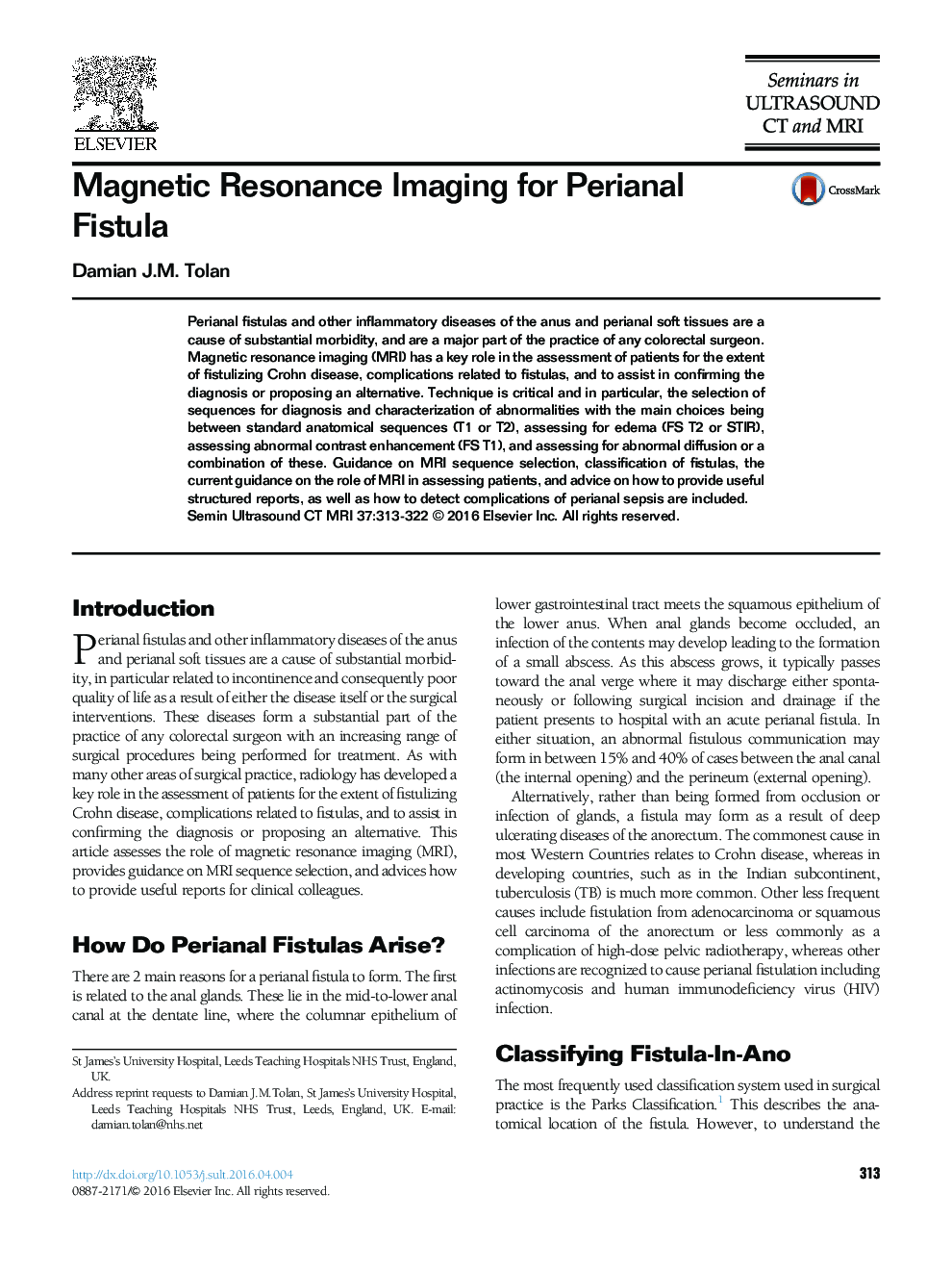| Article ID | Journal | Published Year | Pages | File Type |
|---|---|---|---|---|
| 2731482 | Seminars in Ultrasound, CT and MRI | 2016 | 10 Pages |
Perianal fistulas and other inflammatory diseases of the anus and perianal soft tissues are a cause of substantial morbidity, and are a major part of the practice of any colorectal surgeon. Magnetic resonance imaging (MRI) has a key role in the assessment of patients for the extent of fistulizing Crohn disease, complications related to fistulas, and to assist in confirming the diagnosis or proposing an alternative. Technique is critical and in particular, the selection of sequences for diagnosis and characterization of abnormalities with the main choices being between standard anatomical sequences (T1 or T2), assessing for edema (FS T2 or STIR), assessing abnormal contrast enhancement (FS T1), and assessing for abnormal diffusion or a combination of these. Guidance on MRI sequence selection, classification of fistulas, the current guidance on the role of MRI in assessing patients, and advice on how to provide useful structured reports, as well as how to detect complications of perianal sepsis are included.
